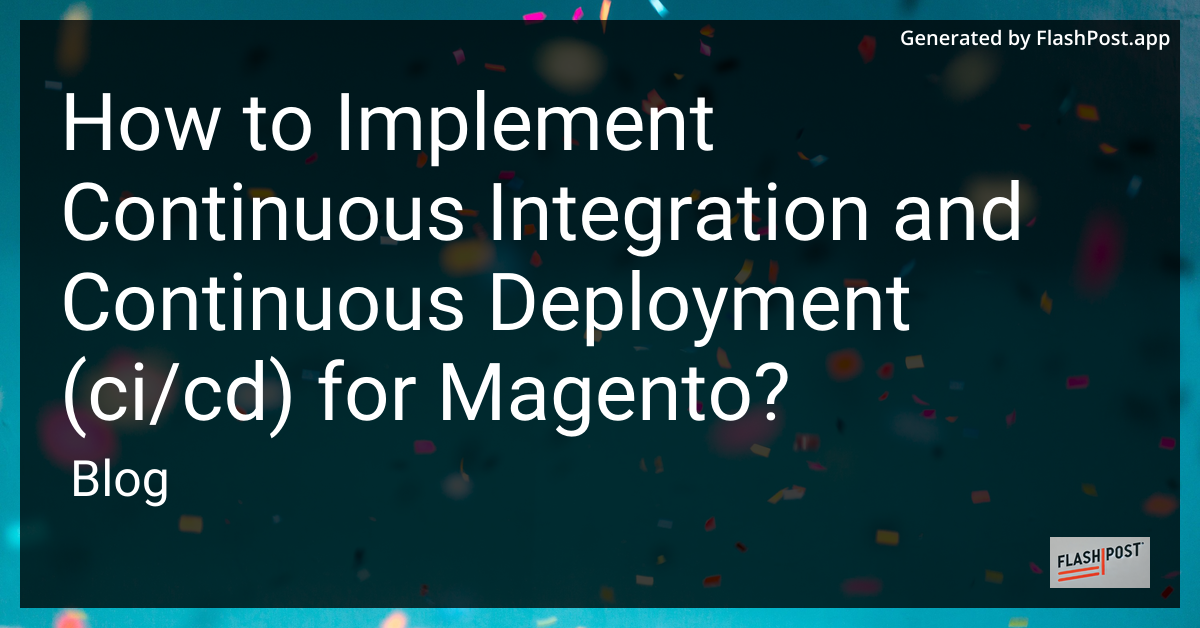
The implementation of Continuous Integration and Continuous Deployment (CI/CD) in Magento can significantly improve your development workflow, allowing for seamless updates and robust e-commerce solutions. This guide will walk you through the essentials of setting up a CI/CD pipeline tailored for Magento.
Continuous Integration (CI) involves automatically testing and integrating code changes, highlighting issues early in the development lifecycle. Continuous Deployment (CD) automates the delivery of changes to production, ensuring every change that passes tests is released to customers.
Popular CI/CD tools that integrate well with Magento include Jenkins, GitLab CI, and GitHub Actions.
Establish a pipeline that performs the following:
Ensure that your CI/CD system is automated and monitor the process for any errors or issues. Use monitoring tools like New Relic or Nagios to track performance after deployment.
Implementing a CI/CD pipeline for Magento is an investment in your development process that enhances reliability, speed, and quality. By automating integration and deployment, you can focus more on delivering features and improving your e-commerce platform.